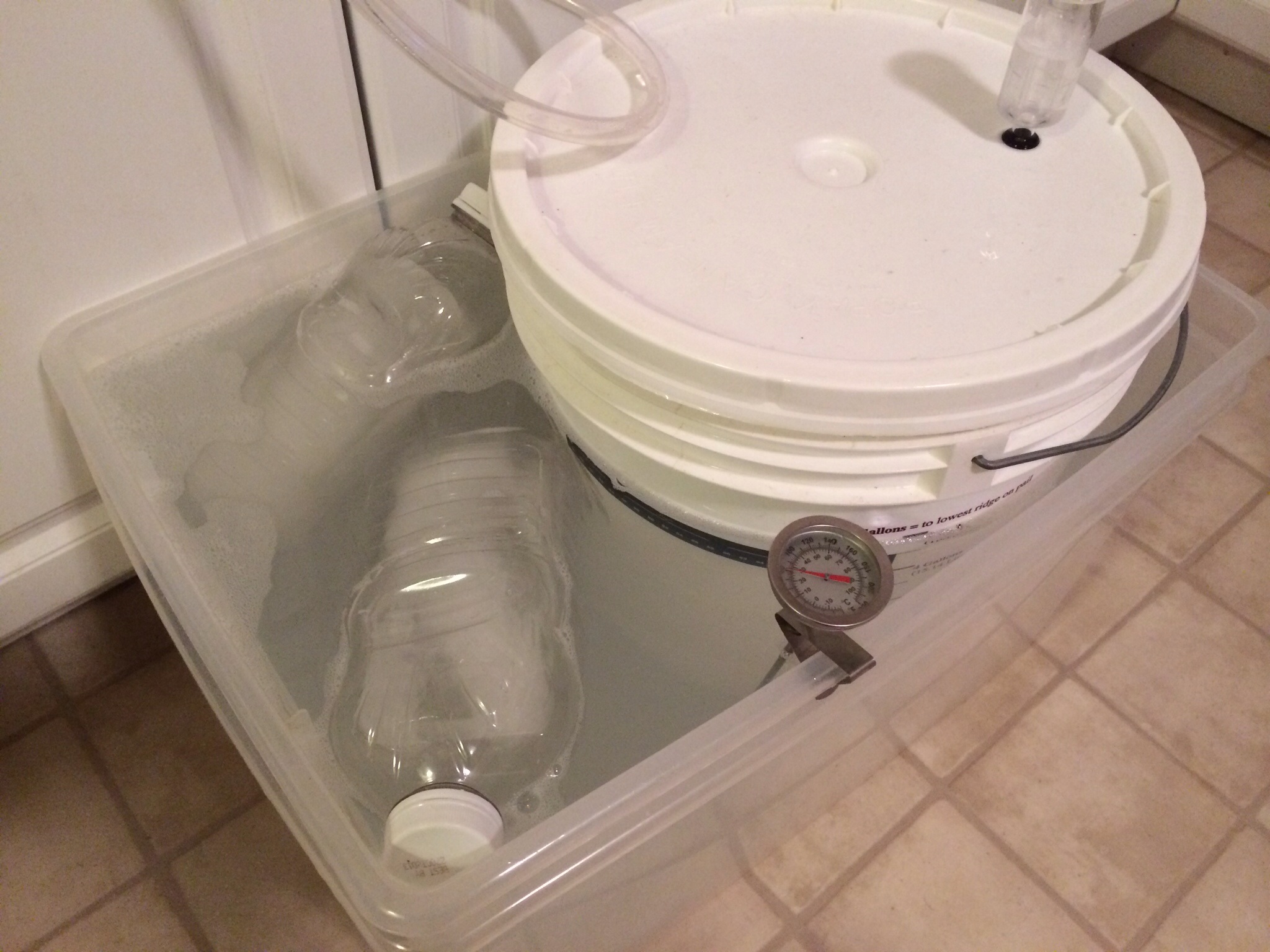 |
| If only the beer tasted as good as it looks. |
Managing fermentation temperature is as important as recipe formulation, if not more. Commercial breweries have professional equipment to precisely set the temperature of their tanks. Advanced home brewers will equip a refrigerator or chest freezer with a temperature controller to control their fermentation temperature. A would-be like myself working within the limitations of brewing in an apartment has limited control over the temperature my beer ferments at.
Every yeast strain has a suggested fermentation temperature range from the manufacturer. The flavor the yeast provides can vary greatly depending on where exactly within the temperature range you ferment at. Guinness was able to brew a crisp and clean lager with their house ale strain at a low enough of a temperature. At a higher temperature would have been more fruity esters found typically produced by ale yeast. Where within the range the beer is fermented is one of the tools at the disposal of a skilled brewer. Brewing outside of the recommend range can lead to off-flavors that ruin your beer.
Rounders Brown Ale pours a beautiful mahogany color. When decanted carefully the clarity is brilliant. The beer has a foamy white head, average in size and retention. The beer is gorgeous. That part of the beer I nailed.
Something is off in the aroma. There is some caramel malt aroma, especially as the beer warms, but there is a medicinal aroma that muddles everything.
The flavor similarly has a light but noticeable solvent quality. There is a harshness that lingers in the palate as the beer finishes with a faint burn.
The beer is drinkable, but it is not good. If I was a broke student I could probably drink an entire batch of it. As an adult with plenty of other beers in the house that I would rather drink, I will dump the batch and move on.
The culprit is almost certainly my fermentation temperature. The suggested temperature range for the yeast I chose, WL007 Dry English Ale is 65-70F. Brewing the beer in late-August I was confident that I could keep the beer in that range. I asked Jennie if I could place the carboy in the coolest room in out apartment to be safe, the bedroom, and she refused. I thought I could still keep the beer cool enough in our kitchen with a swamp bucket and evaporative cooling. Evidently I could not. The unseasonably warm August and September we had didn't do me any favors.
 |
| I used a similar set up to this, except I covered my fermenter in a t-shirt to facilitate evaporative cooling. It wasn't enough |
Sadly this beer is a loser. I feel like Teddy KGB just took every dime I own. Maybe I don't feel that bad, but I am disappointed. If I had fermented cooler or used a more forgiving yeast like Safale S-04 I could have had an excellent beer. Since this was an extract batch my ingredient costs were higher than normal.
Brown Ale is an easy style to brew. It is dark enough to hide minor flaws. Kettle carmelization from the use of extract is less of a concern in a style that has some underlying sweetness to it. Only an idiot like me can screw up two of them in a row after my last brown ale ended up becoming a porter.
Follow me on Instagram @wouldbebrewmaster
Like The Would-be Brewmaster on Facebook
Share what beers you are drinking with me on Untappd
Like The Would-be Brewmaster on Facebook
Share what beers you are drinking with me on Untappd
**Note, In hindsight the WLP007 may have flocced out too quickly. I could have roused the fermenter early on in fermentation.**
No comments:
Post a Comment